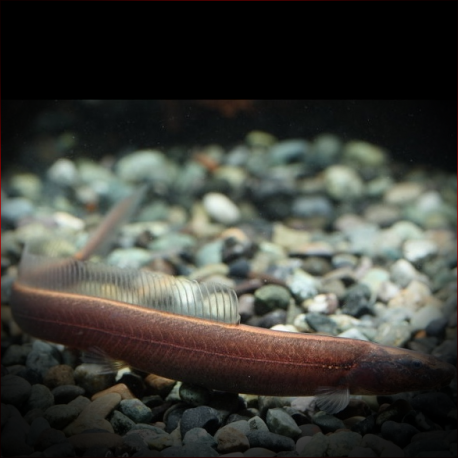More info
Datasheet
| Minimum Tank Size | 160 litres / 42.27 US gallons |
| Maximum Size | 12.5cm / 4.92inches |
| Temperature | 23°C / 73.40°F - 29°C / 84.20°F |
| Hardness | 1.01dgH / 18ppm - 12.05dgH / 215ppm |
| pH | 3.5-7.2 |
General Description
The Vaillantella Maassi, commonly known as the Fork-Tailed Loach, is a reclusive species of loach that is seldom seen during daylight hours. It is typically found in shallow, forest streams with minimal dissolved minerals and a pH as low as 3.0 or 4.0.
Aquarium Setup
To house the Fork-Tailed Loach, a soft, sandy substrate is ideal as they enjoy digging and may bury themselves. Driftwood, roots, and branches should be added to create shady spots and provide a natural habitat feel. Dried leaf litter can also be included for cover and to foster microbe colonies. Dim lighting, aquatic plants like Microsorum and Cryptocoryne, and floating vegetation for light diffusion are recommended. Gentle filtration to avoid high flow rates is necessary along with a well-covered tank to prevent jumping.
Behaviour
These loaches form small territories around hiding places, aggressively defending them. They interact well with upper water column-dwelling fishes like Trichopodus and small cyprinids but can be aggressive towards other benthic tankmates, preying on eggs and fry. Research is key to selecting suitable companions.
Feeding and Diet
Primarily micropredators in the wild, Fork-Tailed Loaches extract insect larvae and small crustaceans from the substrate. While they may accept sinking pellets or flakes, initially offering live and frozen foods like Daphnia, Artemia, and bloodworm is recommended. A varied diet, including homemade gel-based foods, is essential for their optimal health.
Reproduction & Dimorphism
Little is known about the reproduction of Vaillantella Maassi in aquarium settings. Adult females are likely larger and thicker-bodied than males, but no other outward differences have been documented.
Habitat and Distribution
Native to Indonesia and parts of Malaysia and Thailand, the Fork-Tailed Loach inhabits forest streams associated with ancient peat swamps. It is typically found in black or tannin-stained waters with varying substrate compositions and flow rates. Their range includes rivers like Kampar Kiri and Kapuas River basin, amongst others.

